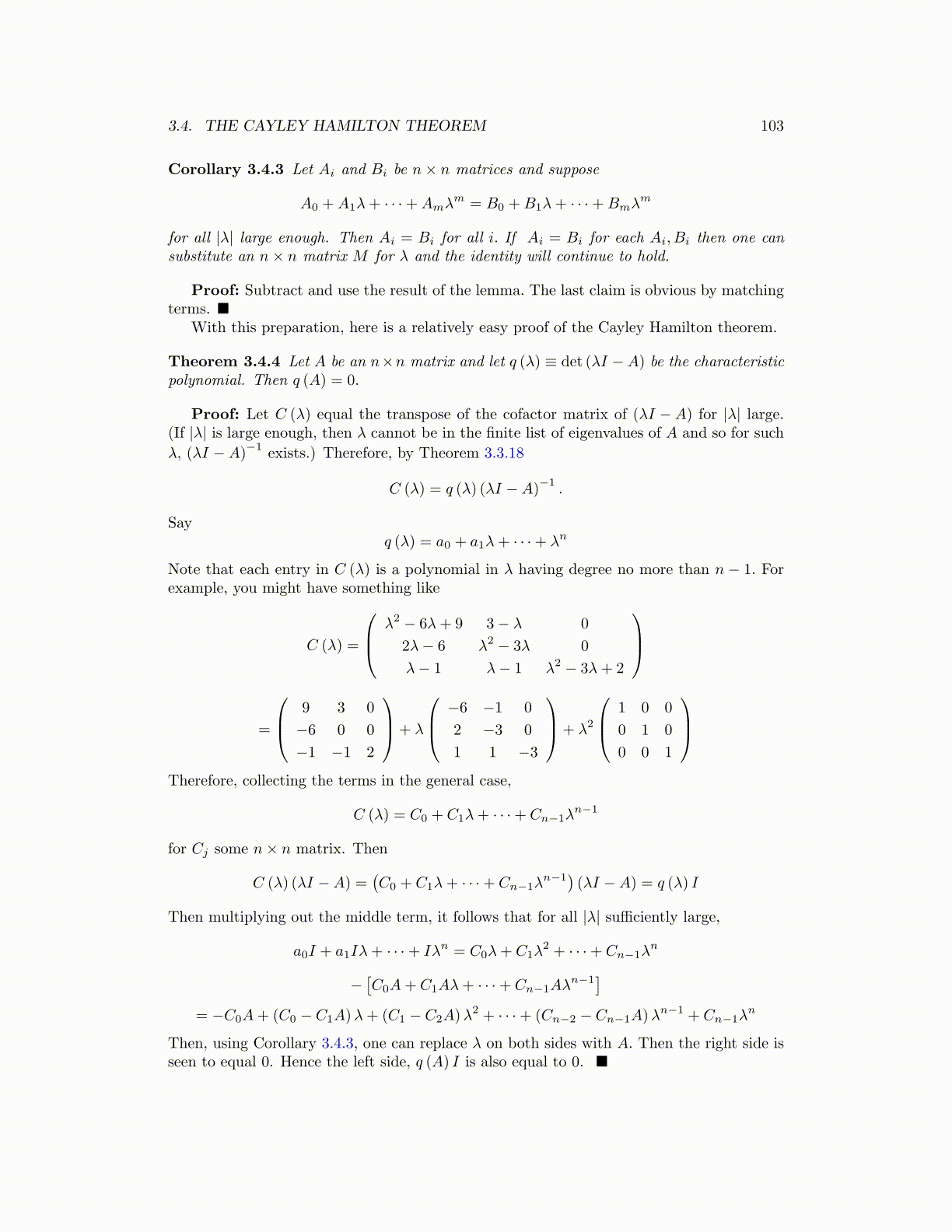
3.4. THE CAYLEY HAMILTON THEOREM 103
Corollary 3.4.3 Let Ai and Bi be n× n matrices and suppose
A0 +A1λ+ · · ·+Amλm = B0 +B1λ+ · · ·+Bmλ
m
for all |λ| large enough. Then Ai = Bi for all i. If Ai = Bi for each Ai, Bi then one cansubstitute an n× n matrix M for λ and the identity will continue to hold.
Proof: Subtract and use the result of the lemma. The last claim is obvious by matchingterms. ■
With this preparation, here is a relatively easy proof of the Cayley Hamilton theorem.
Theorem 3.4.4 Let A be an n×n matrix and let q (λ) ≡ det (λI −A) be the characteristicpolynomial. Then q (A) = 0.
Proof: Let C (λ) equal the transpose of the cofactor matrix of (λI −A) for |λ| large.(If |λ| is large enough, then λ cannot be in the finite list of eigenvalues of A and so for such
λ, (λI −A)−1
exists.) Therefore, by Theorem 3.3.18
C (λ) = q (λ) (λI −A)−1.
Sayq (λ) = a0 + a1λ+ · · ·+ λn
Note that each entry in C (λ) is a polynomial in λ having degree no more than n − 1. Forexample, you might have something like
C (λ) =
λ2 − 6λ+ 9 3− λ 0
2λ− 6 λ2 − 3λ 0
λ− 1 λ− 1 λ2 − 3λ+ 2
=
9 3 0
−6 0 0
−1 −1 2
+ λ
−6 −1 0
2 −3 0
1 1 −3
+ λ2
1 0 0
0 1 0
0 0 1
Therefore, collecting the terms in the general case,
C (λ) = C0 + C1λ+ · · ·+ Cn−1λn−1
for Cj some n× n matrix. Then
C (λ) (λI −A) =(C0 + C1λ+ · · ·+ Cn−1λ
n−1)(λI −A) = q (λ) I
Then multiplying out the middle term, it follows that for all |λ| sufficiently large,
a0I + a1Iλ+ · · ·+ Iλn = C0λ+ C1λ2 + · · ·+ Cn−1λ
n
−[C0A+ C1Aλ+ · · ·+ Cn−1Aλ
n−1]
= −C0A+ (C0 − C1A)λ+ (C1 − C2A)λ2 + · · ·+ (Cn−2 − Cn−1A)λ
n−1 + Cn−1λn
Then, using Corollary 3.4.3, one can replace λ on both sides with A. Then the right side isseen to equal 0. Hence the left side, q (A) I is also equal to 0. ■